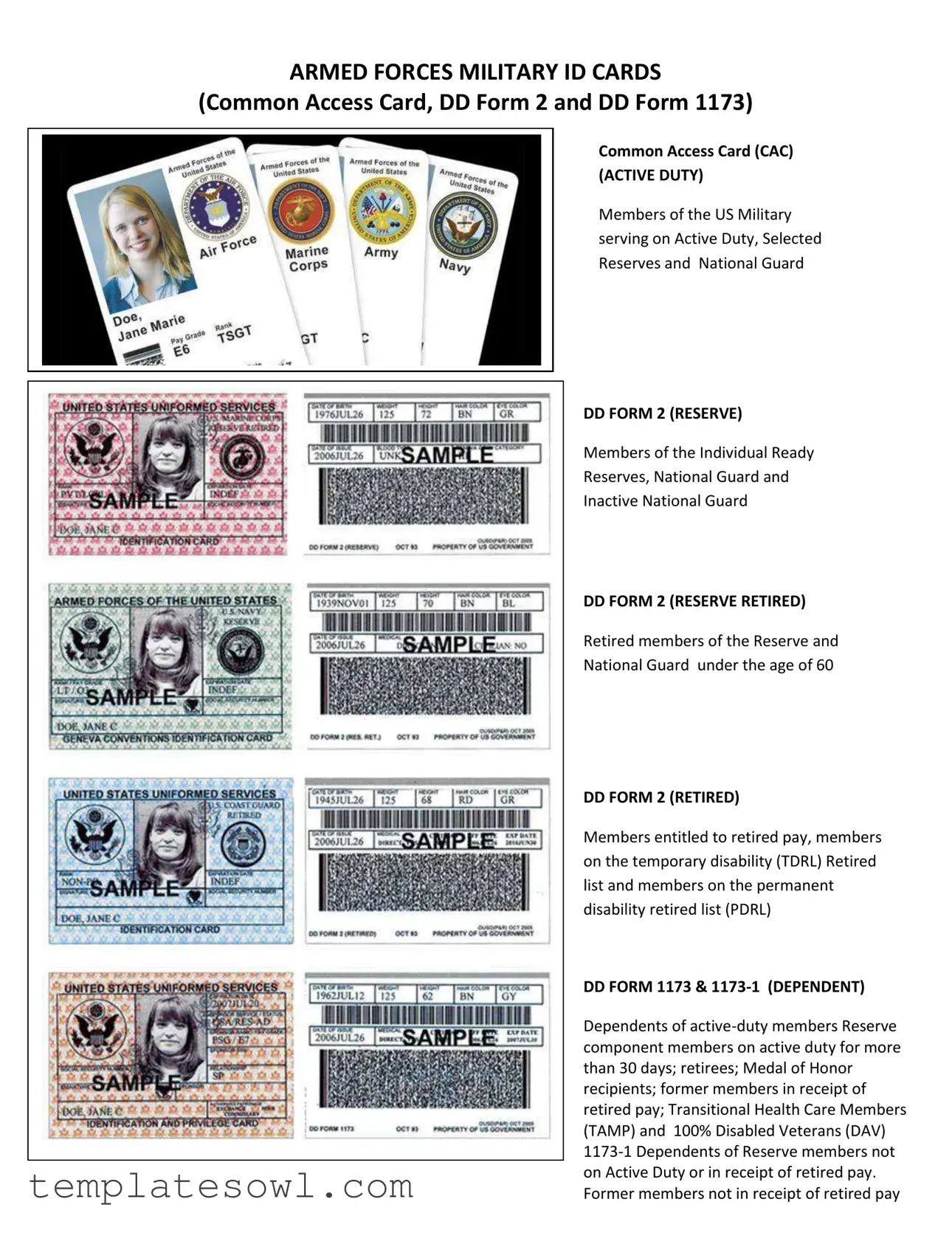What is the Military 1173 form?
The Military 1173 form, also known as the DD Form 1173, serves as a military identification card for dependents of active-duty military members, certain reservists, and other eligible individuals. This card provides access to various benefits and services, including healthcare and military installations.
Who is eligible for a DD Form 1173?
Eligibility for the DD Form 1173 includes dependents of active-duty military personnel, reserve component members who are activated for over 30 days, retirees, Medal of Honor recipients, and individuals receiving transitional health care benefits. Additionally, 100% disabled veterans can also qualify for this card.
How can one apply for a DD Form 1173?
To apply for a DD Form 1173, eligible persons must visit a military identification card office. It is advisable to bring relevant documentation, such as proof of relationship to the service member and personal identification. Applications can also be scheduled through the Defense Manpower Data Center’s online portal for more convenience.
What benefits do holders of the DD Form 1173 receive?
Holders of the DD Form 1173 are entitled to a range of benefits. These typically include access to military health care, commissary and exchange privileges, and access to certain military facilities. Eligibility for some benefits may vary based on individual circumstances.
Is there a renewal process for the DD Form 1173?
Yes, the DD Form 1173 does have a renewal process. Typically, the card must be renewed every few years, depending on the status of the cardholder. It is beneficial to check the expiration date and begin the renewal process well in advance to avoid any disruption in benefits.
Can a DD Form 1173 be used as identification outside military settings?
The DD Form 1173 is primarily intended for use within military contexts. While it may be accepted for certain identification purposes, it is advisable to carry additional forms of identification, such as a state-issued ID or a driver's license, in situations outside military installations.
What should be done if the DD Form 1173 is lost or stolen?
In the event that a DD Form 1173 is lost or stolen, it is important to report the loss to the nearest military identification card office. A replacement can be requested, and individuals may need to provide proof of identification and any other required documents. Prompt action is advisable to prevent potential misuse.
Are there any differences between the DD Form 1173 and DD Form 1173-1?
Yes, there are notable differences. The DD Form 1173 is issued to dependents of active-duty members and certain other eligible individuals, while the DD Form 1173-1 is for dependents of Reserve members not on active duty or those who do not receive retired pay. Each form serves specific eligibility criteria and benefits.


